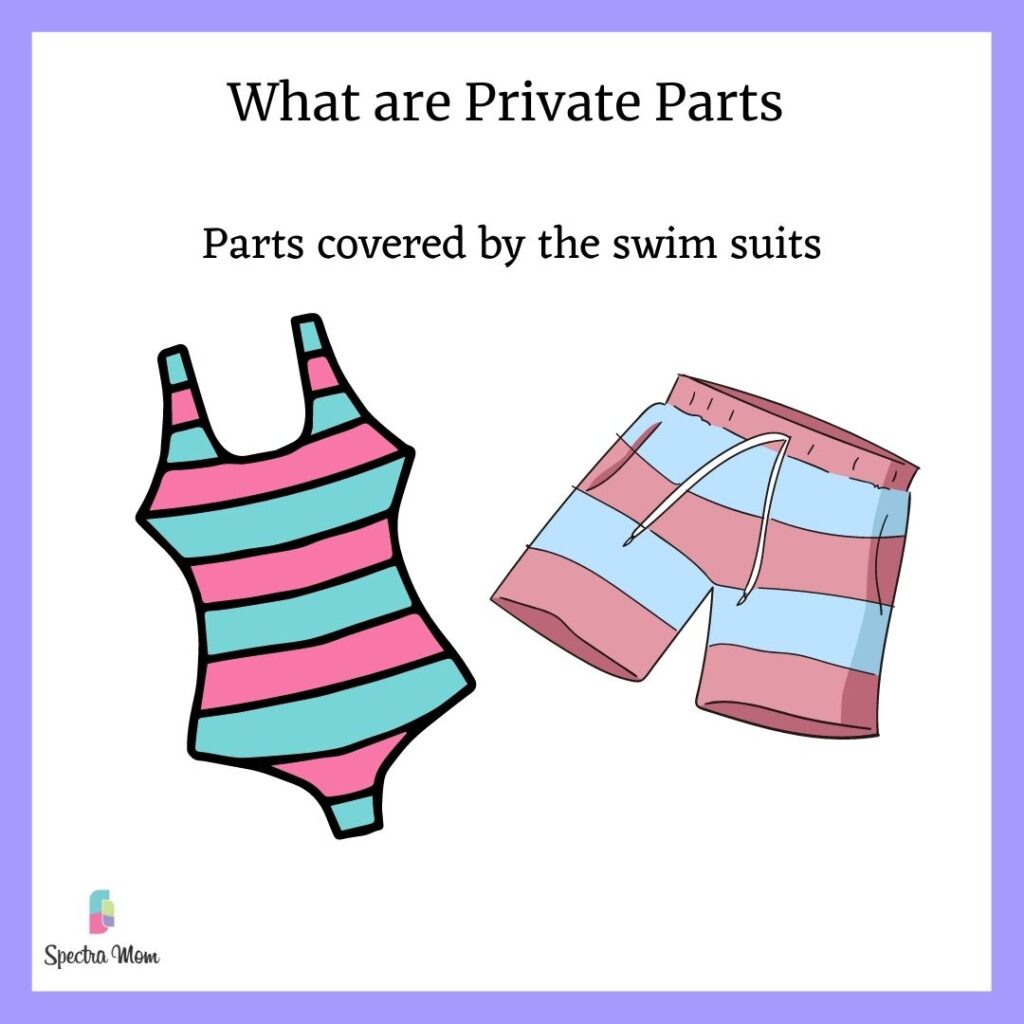It is extremely important to teach kids about safe and unsafe touch and body safety so that they know how to protect themselves from any form of physical abuse. Kids are at a high risk of abuse because they are vulnerable. By teaching them some basic rules around good or bad touch and making them aware of their own body we can help in keeping kids safe from abuse.
Body safety conversations can start as early as 2 years of age and we can start by teaching them the names of various body parts.
Like we teach them names of various body parts like hands, legs, lips, nose etc. it is absolutely alright to teach them the names of their private parts like penis, vulva, buttocks, breasts and so on.
However, if you find it uncomfortable or too soon to start teaching them genital names, it shouldn’t stop you from teaching private parts to your child. Here is how you can teach them to name private parts without use the real names:
Start by telling them that some body parts cannot be touched by anyone other than a few people (explained later on).
Here is how you can tell them:
Some parts of our body cannot be touched by anyone. They are our private parts.
There are 4 such areas:
- The Mouth
- Chest
- Between the legs
- Buttocks
Or you could alternatively explain by saying
“Mouth + Area covered by a bathing suit.”
Refer to the picture and you can show your child the same.


Who can touch your private parts and when?
For toddlers it is not possible that they will never be touched in these areas so explaining them context and who can is important.
- Mom/Dad/Immediate Family while giving you a bath or checking you for injury.
- Parents or family when they hug you or during play – it should never hurt or feel bad.
- Doctors during a physical checkup under the supervision of a parent.
A lot of parents worry about extended family and how to help them differentiate. Honestly, do not think about family members feeling bad if the child does not let them touch them. If you child is comfortable getting changed or bathed only by the parents it is okay. Respect your child’s comfort and tell them that no one can force you to be touched in a way that you dislike.
Teach them the difference between Safe and Unsafe Touch
Good Touch:
Makes you feel safe
Makes you feel happy
It is from someone you love
Bad Touch
It makes you feel sad or uncomfortable
It hurts you – it could be anywhere on the body
It is in your private parts which should not be touched by anyone
Explaining them this will reduce the risk of abuse but they still need to know how to handle the situation if something like this happens! After identifying safe and unsafe touch it is very important to teach the child how to react if something like this happens.
How to Handle Bad Touch
If even after explaining this they find themselves in such a situation we must teach them what to do to protect themselves.
STEP 1 SAY “NO” – If you feel a bad touch, say a big loud “NO” and move away from the place. Scream if you need to, to get people to notice & come to you.
STEP 2 “GO” Go away from that person or place to someone you can trust – parents, teacher, a friend, guardian.
STEP 3 “TELL” – Tell whatever happened to someone they trust immediately – parents, teachers, friend, family!
It is important to reassure your child that if they are in such a situation they should never feel guilty and should immediately come and inform an adult or guardian.
Body Safety does not end at teaching them about good touch and bad touch only.
They must know what to do if they are in that situation. Most importantly they must know that it is not their fault and they can come to the parents and talk about whatever happened.
They must trust you to be their safe place and while you teach them about good touch and bad touch make sure to teach them that god forbid if it happens to them, it is not their fault, they must follow “No, Go, Tell” and come home and inform of any such thing!
A great tool for teaching older kids is through a Movie called Komal.
Komal is a National Award winning 10 minute movie that explains good & bad touch in a very clear yet simplistic manner to children. The movie targets kids ages 6-12 years who are also taught how to prevent yourself from it. The movie can be watched on Youtube and is available in over 20 languages including English, Hindi and regional languages.
Linking the movie here:
Keeping our kids safe in today’s world is important. I hope reading this gave you some clarity about how to do this.
Subscribe to my blog for more such information on parenting, play and learn, daily life hacks and recommendations!

